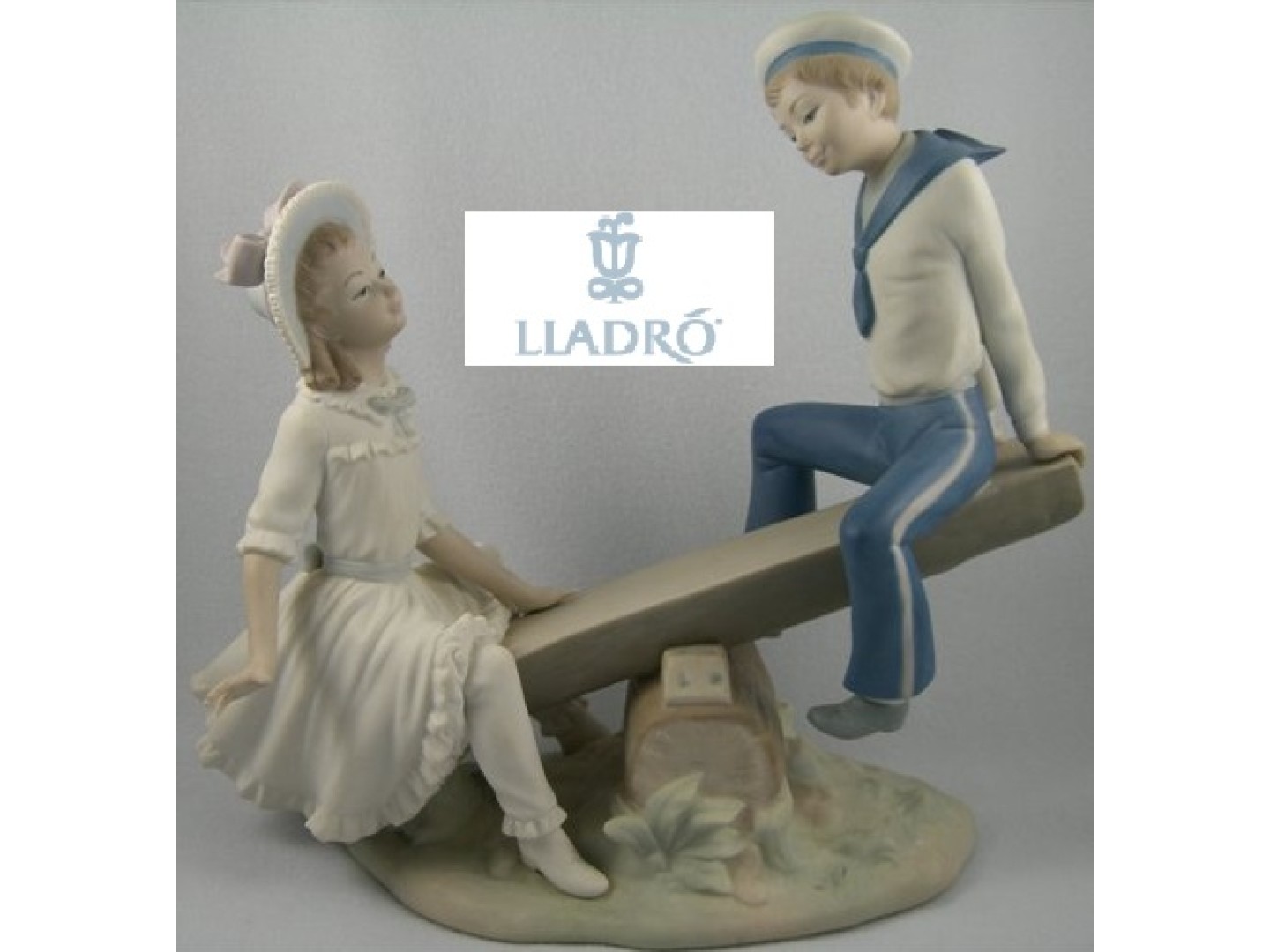Introduction
Lladro is a Spanish company, started in the 1950s, that is best known for its classically styled sculptures with a high gloss porcelain finish. They have captivated a huge following by creating evocative figurines of great sensitivity.
History
Lladro porcelain dates back to 1953 and a small craft workshop in Almacera, a rural village near Valencia, Spain, where pottery has a deep-rooted tradition of originality. The workshop was started by three brothers; Juan, Jose and Vicente Lladro.
The three Lladro brothers spent their childhood working the family farm in Almacera. Their mother, Rosa Lladro, enrolled them in the San Carlos de Valencia School of Arts and Crafts, where they worked as apprentices in the Valencian Tileworks Co. Juan and Jose showed a keen interest in painting while Vincente demonstrated talent in sculpture. In 1951, the brothers began their professional careers by working with the highly reputed Victor de Nalda.
Two years later, the brothers left their day jobs, borrowed 2,000 pesetas from a friend, and founded Lladro Porcelain. With the borrowed money, the brothers combined their artistic talents and ideas to produce their own decorative porcelain plates, jugs, vases, figurines and other gift items.
The enthusiasm of the public for the brothers’ creations required them to expand their workshop several times before they finally outgrew it and moved in 1958 to a warehouse in the neighboring town of Tavernes Blanques. A growing number of sculptors, chemists and decorators joined the brothers and helped them increase their production to reach more keen consumers. In 1962, the Lladro brothers opened the Professional Training School to share their knowledge, experience and creative vision with their associates.
Lladro sculptures began to enter the U.S. market in 1965 and immediately captivated the public’s attention.
On November 2, 1967, work began on the City of Porcelain. The City of Porcelain is a museum dedicated to the artworks of Lladro and their process of creation. It includes a large exhibition/store for viewing and purchasing all the current production models, as well as guided tours of the factory, showing the complete process of a figurine’s creation, the chance to meet the artists, video presentations of the history and principles of Lladro and a training facility for new associates. The Spanish Minister for Industry opened the first facilities of the City of Porcelain on October 13, 1969. Today, the City of Porcelain is the sole source of new Lladro pieces, employing over 2500 people and exporting to 120+ countries around the world.
Over the next few years, the Lladro team evolved to the graceful and profoundly touching style that today characterizes their work. Their figurines portray great sensitivity, romanticism and human emotion that collectors adore all around the world. They also began to release Gres sculptures, a new material revealing further possibilities of expression for the creative team.
In 1973, a 50% acquisition of Weil Ceramics and Glass reinforced Lladro’s presence in North America and marked the next major step in their growth.
30 years into the life of the company, in early 1984, the next generation of the Lladro family was inducted into the company. Rosa, Mari Carmen and Juan Vicente Lladro, representing one child from each of the brothers, were appointed. Having served long apprenticeships in a variety of roles, they were selected to assume responsibility for the future of the company.
In 1985, Lladro created the Collectors Society, a collectors’ club for members around the world to meet and share their passion for Lladro creations.
Through the late 1980’s Lladro continued its global expansion with a Japanese joint venture with the Mitsui group, creating the subsidiary Bussan Lladro, the establishment of Lladro USA and the establishment of Ordal Australia. Further expansion has continued through the creation of Lladro Centers, exhibiting the finest artwork, in major cities around the globe.
The 3 founding brothers finally handed over full control to the second generation in 2003, 50 years after the company was formed. The family continued to keep control, with proportional representation of each of the 3 founding brothers’ families, for only a short time. In 2004, it was decided to appoint Alain Vint as CEO and Managing Director. Alain Vint came from the Richemont Group, which includes Cartier and several other luxury brands. The family members continue to work with the new CEO to retain the family principles.
©2007 Woolvey LLC


